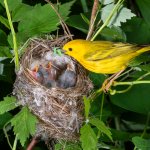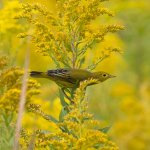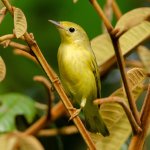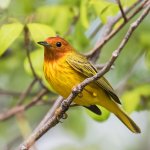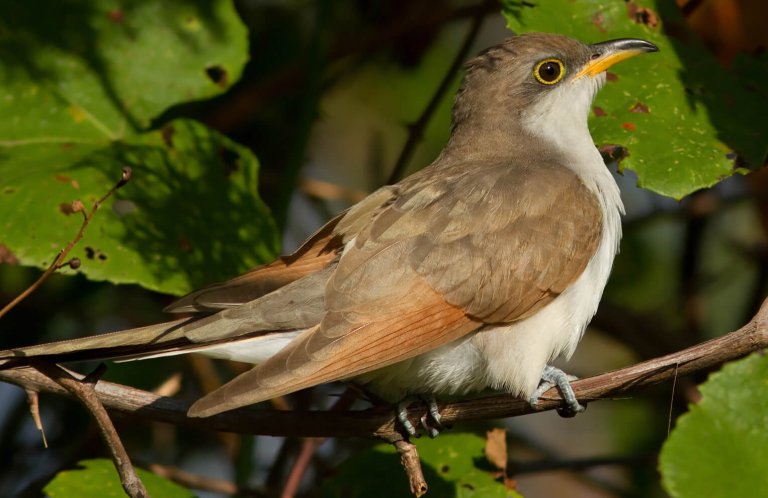About the Yellow Warbler
The Yellow Warbler is the most widespread American wood-warbler. It nests from Alaska to northern South America (including the Galápagos Islands), and in much of the Caribbean, and winters as far south as Peru. Tail tip to forehead, this is also the yellowest North American warbler, even more so than the Prothonotary or Blue-winged. Cinnamon breast streaks embellish the male's gleaming plumage.
The Yellow Warbler's cheerful sweet sweet sweet, I'm so sweet song is familiar to most birders. But it voices a distinctive alarm note in response to one specific danger.
Seet Success
One of the Yellow Warbler's calls, a repeated seet, serves specifically as a Brown-headed Cowbird alert. When a female hears another Yellow Warbler make this call, she rushes back to her nest to prevent the cowbird, a notorious nest parasite, from laying eggs there. Other birds, including Red-winged Blackbirds, also understand this warning; when they hear it, they zip back to their own nests to protect their eggs.
Songs and Sounds
Listen to the Yellow Warbler's typical song here:
Hear a Yellow Warbler's cowbird warning call on this page: Blackbirds Heed Warbler Warnings About Cowbird Danger.
Breeding and Feeding
Insect Patrol
The Yellow Warbler feeds mainly on insects and spiders, gleaning them from shrubs and tree branches or sallying out from a perch to grab winged insects in mid-air. This diminutive hunter sometimes hovers while seeking prey that might be hiding on the undersides of leaves. Like many other migratory songbirds, the Yellow Warbler adds fruit to its diet in winter.
Winter or summer, this warbler provides valuable pest control: One study, conducted on its Costa Rican wintering grounds, showed that the Yellow Warbler and other insectivorous birds ate large quantities of invasive Coffee Berry Borer beetles, helping reduce infestations on coffee plantations in that country by 50 percent.
Mate-Guarding and a Clutch Performance
A male Yellow Warbler quickly claims a territory on the breeding grounds, chasing off intruding males. He courts prospective mates through incessant singing. In fact, one Yellow Warbler may sing more than 3,000 times in a day to attract a female! Once mated, the male attends the female closely as she builds her nest, wary of other males, which often invade established territories and attempt to mate with resident females.
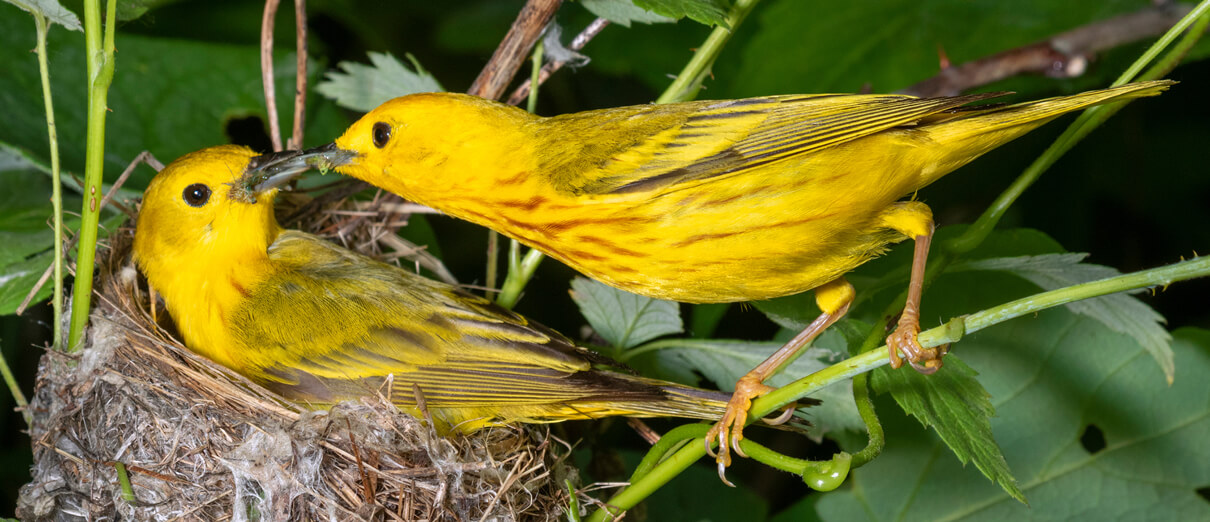
Females build and maintain the cup-shaped nests, incubate the eggs, and brood the hatchlings. Meanwhile, male Yellow Warblers aggressively guard nest sites and bring food to females sitting on eggs or young. Both sexes share chick-rearing duties: After the nestlings fledge, some may follow the mother, while the rest remain with the father.
Like many other birds such as the Kirtland's Warbler and Wood Thrush, the Yellow Warbler is frequently parasitized by Brown-headed Cowbirds, which only lay their eggs in the nests of other birds. This problem is especially common in fragmented habitats, which provide easier access for female cowbirds. But the Yellow Warbler fights back. It seems to recognize the foreign eggs, and often covers over the cowbird-parasitized clutch with new nesting material. If the cowbird returns and re-lays, the warbler will cover them again — sometimes resulting in nests with up to six tiers!
Region and Range
So Many Subspecies
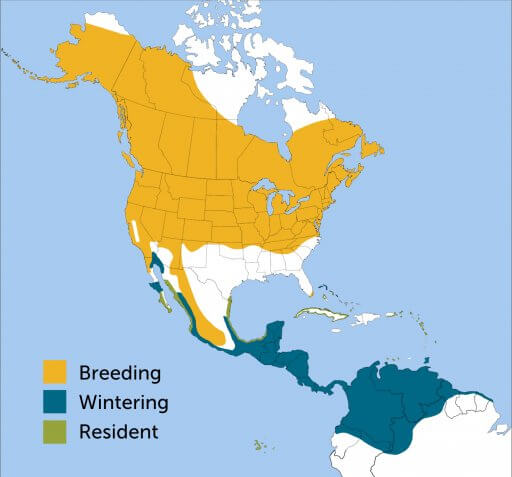
Another superlative associated with the Yellow Warbler is the species' incredible diversity – 37 subspecies are recognized, divided among four groups. Subspecies vary mostly in plumage color and pattern.
The Yellow Warbler nests throughout most of Canada, Alaska, and at least two-thirds of the area covered by the U.S. lower 48 states. As long-distance migrants, few if any of these birds remain north of the Mexican border in winter. However, several resident (nonmigratory) groups are found in Mexico, Central America, the Caribbean, and even the Galápagos Islands off of Ecuador's Pacific coast.
Males in these resident populations have varying amounts of chestnut color on their heads, from just the cap in the case of the “Golden” Yellow Warbler to most of the bird's head in the "Mangrove" Yellow Warbler. Some authorities consider certain populations of these chestnut-headed Yellow Warblers to be separate species, but definitive classifications remain unclear
Conservation
Warblers on the Landscape
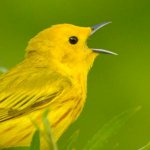
Help support ABC's conservation mission!
Although still numerous, Yellow Warblers are threatened by habitat loss, chiefly destruction of riparian habitats, and the overuse of pesticides. One subspecies, the “Barbados” Yellow Warbler, has been listed under the Endangered Species Act since 1970.
ABC's work helps to conserve the Yellow Warbler and other migratory birds across their full annual life cycle through its BirdScapes approach to conservation. Several BirdScapes in the southwestern United States protect riparian areas for the Endangered western subspecies of the Yellow-billed Cuckoo, and these BirdScapes also shelter the Yellow Warbler and other birds.
ABC also has several initiatives in place that tackle threats, including our Cats Indoors program, which encourages pet owners to keep cats and birds safe.
Get Involved
Policies enacted by the U.S. Congress and federal agencies, such as the U.S. Fish and Wildlife Service, have a huge impact on migratory birds. You can help shape these rules for the better by telling lawmakers to prioritize birds, bird habitat, and bird-friendly measures. To get started, visit ABC's Action Center.
Living a bird-friendly life can have an immediate impact on migratory birds in the United States. Doing so can be as easy as adding native plants to your garden, avoiding pesticides, and keeping cats indoors. To learn more, visit our Bird-Friendly Life page.
American Bird Conservancy and our Migratory Bird Joint Venture partners have improved conservation management on more than 8.5 million acres of U.S. bird habitat — an area larger than the state of Maryland — over the last ten years. That's not all: With the help of international partners, we've established a network of more than 100 areas of priority bird habitat across the Americas, helping to ensure that birds' needs are met during all stages of their lifecycles. These are monumental undertakings, requiring the support of many, and you can help by making a gift today.






































